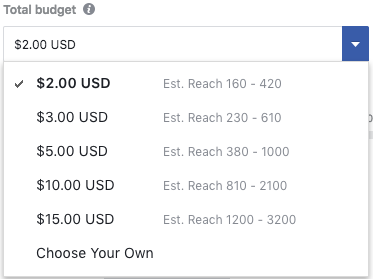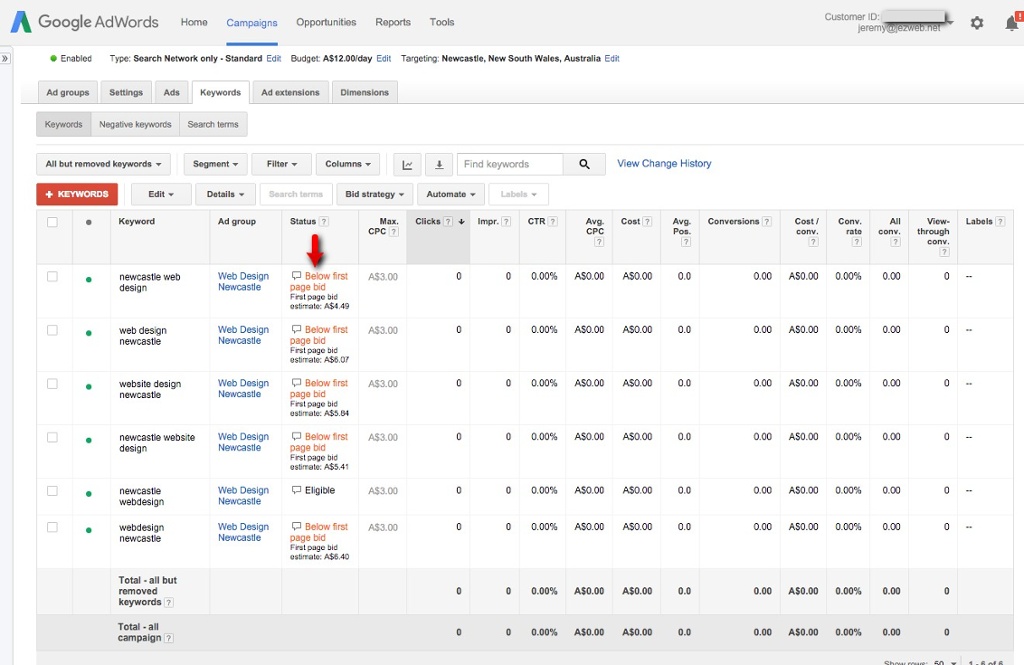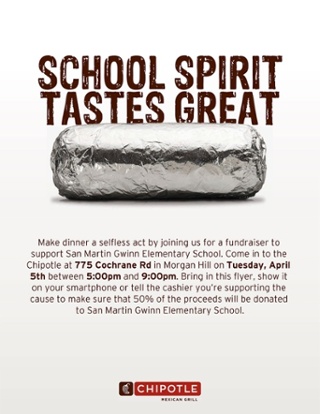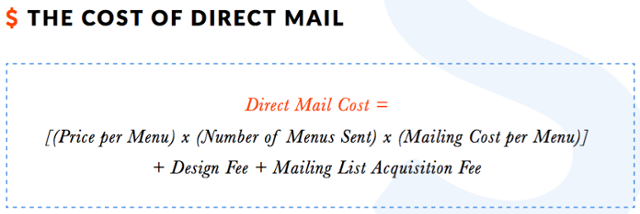Invest in Success: How To Create A Winning Restaurant Marketing Budget
7 Min Read By Robert Hale
Not long ago, marketing for restaurants involved taking out an ad in the local paper, or using the good ol’ fashion word-of-mouth to get customers in the door.
Now, it’s a bit more complicated.
It seems a new marketing channel pops up each week, and while restaurants have no shortage of options to leverage when it comes to marketing their business, this presents a problem.
With so many different mediums, from search, to social, to television and print ad’s, how do you budget accordingly?
As the winter winds rage outside, let’s hunker down and walk through the most effective marketing options for restaurants, where to invest, and how map out your 2018 restaurant marketing budget.
Why are restaurant marketing budgets so complicated?
Depending on your goals, any one restaurant marketing activity can be done for free or require hundreds of thousands of dollars.
Sadly, there's no one-size-fits-all restaurant marketing budget.
The variety of options, all of which can be tested and changed on a regular basis, can be hard to track and manage. As you begin to build out your own marketing programs, this restaurant marketing plan template is a phenomenal tool that allows you manage your own budget and leverage these channels effectively.
Read on for five different line items in your restaurant marketing budget, why they're important, and how much you can expect to spend.
1) Social Media Budget
Seventy-six percent of internet-using Americans are on social media.
This channel has become critical for restaurants to manage reviews, push out daily specials, and even act as their de-facto website. At a high level, social media can be broken down into organic (or free) posting and paid posting.
Organic posting is great to build a following cheaply and slowly build a brand over time. Sometimes, though, slowly isn’t going to cut it and you need to reach a larger audience. This is when you can boost organic posts or create ads.
Boosting Facebook posts is when you take an existing post and put money behind it to reach a wider audience. You'll be prompted to select an audience and budget range before spending any money.

There are a variety of factors that enable a broader use of various social channels when boosting and setting budget, such as:
Audience Size and Reach
Needless to say, a bigger audience results in a bigger budget.
However, the point is to scale your ad spend to the point of maximum total utility. In other words: if your budget allows it, spend as much as it takes to make the ROI as low as it can be.
Frequency
Perhaps one ad is enough if you have a big, one-time event you’re promoting, but if you need to post frequently since you just opened a new location, this can cost you even more. Identify when is the most underutilized time or part of your business and push out that message accordingly.
Again – needless to say here, but more frequent ads will result in higher costs but ideally more return.
Imagery and Content
You can post content on all social channels that you use an iPhone to create or pay tens or even hundreds of thousands of dollars to have a professional photoshoot. Higher quality content will elevate your brand and drive more engagement that will turn into more people coming in your door.
Handling all of the above carefully means you can spend your money wisely and more effectively, thus controlling your budget and limiting wasteful ad spend in your restaurant marketing budget.
2) Google and Search Engine Ads
Google alone sees 3.5 billion searches a day. Having ads at the top of a search result can be a great way to get your name in front of “ready to buy” customers.
Largely, there are two areas to focus on to set you up for success and gauge your spending levels:
- Specificity of the keyword
- Frequency with which the keyword is searched
The challenge is that everytime someone clicks on your ad you will be charged so it's important to focus on searches that you believe have the highest intent to end up coming into your restaurant.
What keywords should I go after?
Targeting a keyword like “best places to hold a holiday party in Austin” may seem like a good idea, but what if people don’t want to have their holiday party at a restaurant, but rather are looking to do a more activity-based outing?
Going more narrow to target “best restaurants to hold a holiday party in Austin” would give a better result.
While that keyword would target the right person, you may find that only a handful of people search this a month, and so it won’t give you a ton of return. You could broaden the term (i.e. "best restaurants in Austin"), but even better would be identifying as many terms as possible to bid on at the same time. That way, over the course of a month or year, the volume is meaningful.
The image below for a web design company shows what your Google AdWords dashboard will look like. You can set your restaurant's budget and choose which terms to target. You can target multiple keywords and Google will tell you which ones are likely to rank to your audience.

3) Community Events and Restaurant Sponsorships
Giving back to the community and sponsoring events can be a great marketing tactic because restaurants, like the community, are highly local.
A local music festival could be seen as a place to unwind, kick-back, and be with friends. By sponsoring this consumers will see your restaurant in the same way.
Program spend here can seem hard to measure when compared to other marketing tactics. After all, your restaurant can give $10 to a local charity or your restaurant enterprise can partner to raise $10 million for a nationwide charity.
Sponsorship budget can also be totally variable. For example, Chipotle is a frequent engager in give back nights, where local groups partner with the restaurant to increase sales in exchange for a cut of the revenue. The flyer below shows that Chipotle will give 50 percent of proceeds from sales directly attributed to the event back to the fundraisers. In this situation, the budget is totally dependent on how many people go to Chipotle and bring the flyer. Either way, Chipotle sees more sales and the group raises funds.

No matter what your budget, your marketing activity in this area should be dedicated to achieving an audience reach and securing engagement.
Reach
Each sponsorship should be associated with a reach like the number of attendees of a game or festival.
Similar to spend on other channels you should ask yourself how much this reach permeates your total target audience. For example, if a festival has 2,000 attendees in a town of 50,000 people you would have messaged 4 percent of your audience. Even further, it is important to note that sponsorship often extends beyond just the event itself and includes all the promotion and marketing it will do for itself that you may be associated with (e.g. PR).
Engagement
Engagement is oftentimes higher if you align your restaurant with an event lining up with your concept.
For example, a paid social ad may address a 50,000 person town at a low cost, but if the festival you sponsor is full of avid foodies, they are more likely to engage with your sponsorship than other channels.
Brand Value
Lastly, and hardest to measure, is the brand value of being associated with sponsorship.
For long established companies sponsorship many not give you any more brand value, but for newer restaurants or restaurants expanding into new markets, being a sponsor can give people motivation for taking action in a much deeper way than any one ad can.
4) Video
As a marketer myself, the rise of video marketing has been one of the most staggering things to watch. In 2017 it is estimated 74 percent of all internet traffic was based. In addition, video content generates 1,200 percent more shares than text and image based content.
The cost of YouTube ads ranges between 10 and 30 cents per view. As for TV ads, local ads range from a couple hundred dollars to $1,500. Overall, TV ad prices are on the rise, further cementing the need of a high potential ROI if you take this route.
Unlike a lot of the other items on this list, video is both a medium of production as well as a distribution channel. Costs associated with both are unique.
Production
Video production can range from using a smartphone to capture quick and authentic content to larger stories that have many layers of cost.
Larger video production can include: storyboarding, graphics, actors, camera and equipment, editing crew, props, and much more. This can quickly add up in cost to the thousands (or more). While this isn’t a hard and fast rule, there is usually a strong correlation between amount of dollars spent on reach and disruption with amount of spend on production.
Distribution
The two most frequent ways to promote your video are on social media (namely Facebook and YouTube) or through TV ad spots.
For social, one simply puts a budget against a video you hope to boost on your social channels or look into YouTube ads.
Television can be tricky, because most television options have a broad and diverse audience it can be hard for restaurants to see the value of television ads. While larger groups can certainly get value out of these efforts, single location restaurants should focus on hyper local television channels or using their video content to be a preamble ad on localized video formats like a movie theater or a welcome video at a local tourist office.
5) Print Ads and Direct Mail
Direct mail ads can be particularly helpful for restaurants as they are hyperlocal.
Most frequently, restaurants send out or drop off menus to residential areas with a propensity to go out to eat, but it can also be used to promote a one off event or update to your restaurant. Cost is largely the result of designing, printing, and distribution.

Design and Print
The design is a one time cost, but printing companies can charge anywhere from cents to dollars to tens of dollars for any one asset. Given that the response rate for direct mail is on average 4.4 percent the cost at ten dollars an asset can quickly outweigh the benefit.
Distribution
With distribution there are two options: drop off or list buying.
For larger companies you may want to buy a list of names of people with certain criteria that you deem important like proximity to your restaurant, age group, sex, and more. These can help you target the right audience and improve your response rate. Then you will have to pay for any and all postage.
Many single location restaurants will find this option may take too much time and may not be worth it given the cost. Instead, simply or condo buildings will maximize your return.
Building Your Restaurant Marketing Budget
As a marketer, I have to remind myself that it all comes down to having the right message, targeted to the right audience, sent at the right time.
While that may seem obvious, it's important to think about all of these elements when selecting which type of marketing will be most helpful for you and how to maximize its impact on your behalf. The above outlined a variety of options, and with this free restaurant marketing plan template, you will be able to manage and spend your restaurant marketing dollars wisely.


